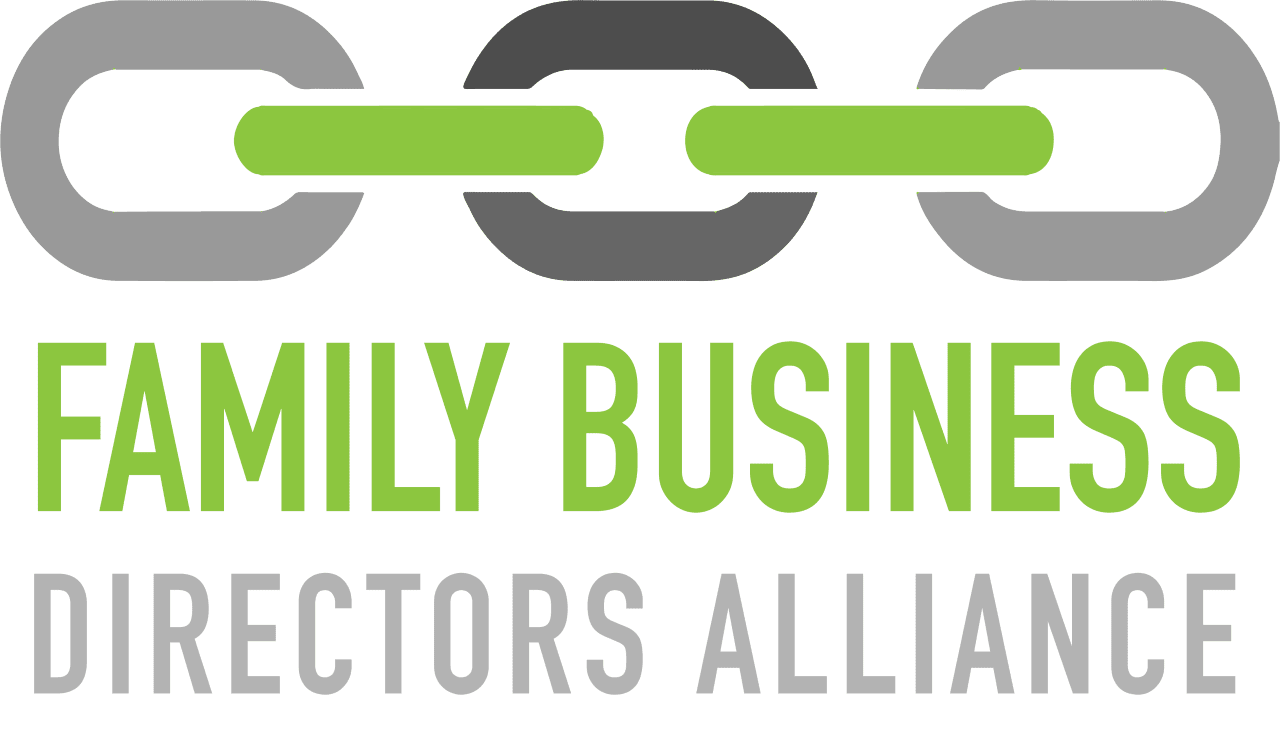15th Annual Family Business Forum: A Story of Family Business Transformation
Lunch with Leaders: Attracting and Retaining Talent
Entitlement with Kim Eddleston
The Family Constitution: A Foundation for Family Alignment
Changing Disagreement into Dialogue: How to Manage Conflicts and Enhance Communication
Your 7-Step Plan for Creating Chaos in Your Family Business
This article was originally published by Warner Norcross + Judd and has been republished with consent.

William Lentine
Most business owners know that proper succession planning can help keep their business running strong into the next generation. They understand the importance of creating a plan to prepare heirs and key employees to run the business when it is time. But sometimes owners are busy and fail to plan for the future of their business in a timely manner.
Executing an unplanned transition when the family business leader becomes incapacitated or passes can be painful for the family (at an already difficult time) and potentially damaging for the business. Families in this situation often engage Warner to help them create a path forward for the business.
We think it makes sense to offer some lessons learned by these families as a resource for current business owners. Instead of offering a typical “best practices” list, we took a different approach. Here are some “worst practices” that will surely wreak chaos in your family business after you pass – from families who have experienced an unplanned business transition
7 Ways to Create Chaos in the Family Business After Your Death
- Don’t document your good intentions. Think about succession planning for years, but don’t document any of your thoughts or planning ideas for the family. Or, to make it really interesting, keep jotting down ideas on various notepads, napkins or sticky notes over the years, creating obvious contradictions between the ideas.
- Leave business ownership to your family but without a skilled operator in charge of it. This spreads chaos over the widest possible range after your death, affecting family members, employees, customers, suppliers and professional advisors when the battle lines are drawn between children and possibly your spouse as they wrestle for control of the company while dealing with their grief.
- Pick one winner. Leave both the business equity and control to one child that seems reasonably responsible and ask them to do the “right” thing for their siblings and remaining parent. For maximum family strife, the “responsible” child should be married to a spouse who is greedy or difficult to deal with.
- Don’t do any estate or tax planning. This way your heirs will not only struggle with the above issues but will also inherit a huge tax bill that they were not expecting and will have to cover by taking out loans or by selling the business.
- Micro-manage future leaders. Allowing your children or other key employees to manage portions of the business will allow a leader or group of leaders to naturally emerge, whereas micro-managing those heirs and other key employees in their current positions will ensure that they won’t learn how to lead, make decisions or accept responsibility.
- Don’t discuss the future of the family business. Avoiding these conversations ensures that you won’t know whether your heirs or current managers actually want to run the business and allows you to create a pressing sense of obligation for the next generation to work in or run the business. Even better, this sense of obligation can create next generation business leaders who are resentful or who lack the passion that you brought to running the business.
- Keep your professional advisors under wraps. Failure to introduce your professional team to your children can create havoc for your business because neither of these groups will be prepared to handle the inevitable difficult discussions that ensue during a transition. Plus, your children will not know and may not trust your attorney, CPA, investment advisor or other professional advisors, adding even more obstacles to this transition.
Having No Plan Can Also Cause Chaos in Your Business
Naturally, we wouldn’t expect you to do any of the things on this list on purpose to cause disruption and bad feelings in your family. But sometimes, not planning for the future can have the same impact on your family as if you had intentionally tried to cause chaos, leaving loved ones in a less than desirable position down the road should something happen to you.
Many of the steps involved in successfully transitioning a family business can take years, even decades to complete, so it is better to start planning sooner rather than later. Contact your Warner attorney or Bill Lentine at wlentine@wnj.com or at 248.784.5061 to begin planning for the eventual transition or sale of your family business.
Rightsizing Risk Series: Creating Value for the Future
As the economy begins to emerge from beneath COVID-related restrictions, many uncertainties remain in the small business sector. But one step you can take to right-size your risk and improve your opportunities for future growth is to make sure you have good financial management and tighten your financials, according to John Ruther, managing director for consulting firm O’Keefe. He was interviewed by Sheri Welsh for The Welsh Wire podcast, sponsored by the Family Business Alliance.
“Making sure that somebody can see three to five years of really good solid financials, that you can’t poke holes in, it turns out to be really valuable,” he says.
Ultimately, the goal of good financial management is to create value for the future, Ruther says.
“And obviously, if something’s not valuable anymore, then there’s not a need for it. So as long as you’re keeping it valuable, then that makes all the sense in the world.”
Ruther also says it’s also important to expand company knowledge and expertise beyond the firm’s founder.
“In a lot of cases, you’ll see that the people who work for or work within that company look to that person to make all those decisions. So when it comes time to look to either pass it on or exit or take a look at even expanding the customer base, [if] it’s that person that is the reason that the business is so successful [then] it’s really important for you to start to pass that information on to somebody else.”
He also says you can help future-proof your business by spending time now in strengthening relationships and building trust with suppliers, bankers, etc.
The Family Business Alliance serves to advance family businesses in West Michigan with the tools, strategies, and partners to achieve multi-generational success. We provide educational opportunities, events, and resources that will assist you to elevate leadership, navigate governance and create connections.
Rightsizing Risk Series: Fraud in the Family Business
The Association of Certified Fraud Examiners expects employee embezzlement to increase by 71 percent over the next 12 months. Is your family business prepared?
One of the simplest steps to take is regularly checking your bank statements. “I know that those of you that are business owners may think, ‘Oh, I don’t have time, I have people to do this for me,’ but I will tell you, you will catch a lot of things if you periodically run and check the bank statement, just scroll through and see what a few things are,” says Kristen Spence, Fraud & Litigation Manager for Hungerford Nichols CPAs + Advisors.
Other topics discussed during the 30-minute podcast include how to spot red flag warnings in payroll operations, securely manage manufacturing inventory, and reduce risk by implementing proper internal controls.
Those formal internal controls are especially important for small family-run businesses, says Katy Felver, Business Advisor for Hungerford Nichols CPAs + Advisors. “It’s a little bit more challenging to put internal controls in place [but] it is possible,” she says. “And it isn’t because I don’t trust you, it’s because we’ve got to have each other’s backs. We always have to make sure that we’ve got it like you’re watching me, I’m watching you. We’ve got transparency and honesty going on,” continued Felver.
For any business owner, there is no substitute for knowing your employees and knowing what’s going on.
“Kind of my motto is when you’re a business owner, if you’re able, keep your finger on the pulse of what’s going on in your organization,” Spence says. “And a good way to do that is, honestly, hang around the water cooler. Get to know your employees. And if they are comfortable with you, eventually, they will start telling you things that they wish they had told you,” she stated.
Spence and Felver shared their advice for managing fraud risk when they were interviewed by Sheri Welsh for The Welsh Wire podcast, sponsored by the Family Business Alliance.
Banking Relationships that Make an Impact to your Bottom Line
Family-owned small businesses face lots of challenges. 2K Tool, founded 15 years ago by Heidi Smith and her son Kevin, has navigated a path to growth and success by having a productive partnership with their banker, Old National Bank. “I think that partnering with a banker who understands your industry is very important, [who] understands the manufacturing industry a lot, and you have to click in a way that you trust the relationship, too,” Heidi says.
2K Tool is an innovative leader in custom machining and mold making. It has 25 employees in Grand Rapids, including Heidi’s husband, her daughter Amanda, who serves as operations manager, and Heidi’s son-in-law Aric.
Leadership Skills that Deliver
Do you know who you really are? You better if you want to be an effective business leader.
Self-awareness is crucial to leadership, says Rob Elliott, a partner in Pondera Leadership Consulting. He talked recently with Sheri Welsh for The Welsh Wire podcast, sponsored by the Family Business Alliance.
The Secret to Effective Family Business Leadership
“What’s the key to effective leadership in a family business? Identity.”
– Tom Emigh of Acorn Leadership
“You have to know who you are before you can lead effectively, and that’s really the core of it,” says Tom Emigh, Leadership Coach & Principal for Acorn Leadership. “Identity is about the question, who am I?” Emigh talked recently with Sheri Welsh for The Welsh Wire podcast, sponsored by the Family Business Alliance.
Understand the Complex Dynamics of Successful Decision Making
Navigating the complex dynamics of decision-making can be one of the biggest challenges to family business success.
Wade Wyant, Executive Advisor/Scaling Up Coach at Red Wagon Advisors of Ada, suggested ways to address those challenges when he spoke with Sheri Welsh for The Welsh Wire podcast, sponsored by the Family Business Alliance.
New Research Suggests Family Business Profit in Risk Taking
Family businesses perform better in highly competitive environments if they invest in risky activities like mergers and acquisitions, according to new research on risk aversion versus performance in family-owned firms.
Ana Gonzalez, Director of the Family Owned Business Institute and Assistant Professor at the Management Department at Grand Valley State University, talked about her findings when she was interviewed by Sheri Welsh for The Welsh Wire podcast, sponsored by the Family Business Alliance.
Female Leadership in the Family Business
New research on gender diversity in family businesses shows that women tend to be more upbeat about business performance than men — but that changes if the women are in leadership positions, according to Ana Gonzalez, Director of the Family Owned Business Institute and Assistant Professor at the Management Department at Grand Valley State University. She was interviewed by Sheri Welsh for The Welsh Wire podcast, sponsored by the Family Business Alliance.
Why Won’t My Parents Retire and Let Me Run the Family Business?
This article was originally published by Warner Norcross + Judd and has been republished with consent.

Bruce Young
Partner, Warner Norcross + Judd
If you have spent your career preparing to take over the family business, it can be frustrating to wait for the senior generation to decide that they are ready to retire. It also may be hard to understand why mom or dad chooses to keep putting in the long hours and would rather deal with the challenges of the business instead of retiring and enjoying life.
For the next generation, the waiting is even more difficult if your parents have not created a succession plan. This causes great uncertainty regarding the role each person should be preparing for and how a successor will be chosen if a parent passes away without a plan.
Sometimes the wait exists because the parents may still enjoy running the business. They likely are in no hurry to let go of a company to which they have devoted their lives. Or, parents may not wish to deal with the complex emotions, the fear of the unknown or the hard feelings associated with choosing successors. These issues and others can create barriers to planning for a transfer of the business to the next generation.
If you want to help your parents focus on succession, it is important to understand the issues behind their reluctance to do this planning and understand the strategies for addressing them (warning: it might take years). Below are some common issues that our succession planning attorneys, working with the family’s other professionals, help families overcome to begin preparing for ownership transition and creating a succession plan.
Coping With Reasons Why Parents Won’t Leave the Business
1.They are uncertain about how they can be financially secure away from the business.
This one is huge, and succession will not be addressed if this concern is present. However, many options exist to solve this problem, and your wealth advisors and your attorney can certainly help you find one that is right for your family.
-
- Common approaches include taking higher pay for a few years and saving it, selling a portion of the equity back to the business or to other family members, creating deferred compensation arrangements, or retaining assets to lease back to the operating business.
2. Their identity is tied to the business.
-
- A parent may be able to identify a new role for themselves that is related to the business such as: Chair of the Board, consultant, informal advisor, trainer/mentor, representative to industry associations or other related groups, etc.
- Depending on interests and skill sets, a parent can develop a new role relating to a family foundation, family investments, family governance, next-generation education or a family office.
3. They worry that their life will lack purpose without the business to run.
After they have devoted decades to building a business, it may be hard for them to see that they could have an important purpose elsewhere.
-
- Help them realize that as they transition the business to someone else, they can use their lifetime of experience to benefit others. Examples of new ventures could include starting a consulting firm, speaking on business or motivational topics, serving on boards of other companies or nonprofits, leading philanthropic organizations, teaching business classes at a college, working with local business associations or business startup programs, or coaching students in business/entrepreneur programs such as Junior Achievement or DECA.
4. They believe successors are not ready to run the business.
Find out what their specific concerns are and take steps to alleviate these concerns.
-
- Seek opportunities to demonstrate the ability to succeed, including rotations through all functional areas of the company.
- Engage in learning and development such as an executive MBA program, leadership courses, mentorship plans, connections with other business leaders, and working with consultants or mentors from other businesses.
5. They believe that they are irreplaceable.
Some of the strategies mentioned above can help with this concern too. However, this one may be difficult to address without outside help.
-
- Make sure the senior generation gets exposed to the skills and successes of next-generation family members and a well-functioning management team.
- Identify friends or business acquaintances who have successfully transitioned their business who might be helpful examples or resources.
- Consider meetings with former owners of multigenerational businesses now managed by the next generation. This could provide understanding of the issues they faced during the process and help gather best practices.
6. They are avoiding hard feelings that will occur in the family when a successor is chosen.
This is where a good succession planning attorney or advisor can help your family design a plan that creates a win-win situation for the members of both generations.
-
- You may need to enlist additional help to move your parents to realize that if they want to ensure the continued success of the company after they are gone, they need to make decisions now that will make that happen. Help them see that it is bad for the business and for the family to have the children fighting for company control while working through their grief after a parent’s death.
7. They equate retirement with a decline in health or even impending death.
Everyone has heard a story about someone who died soon after retirement, and even though this is rarely the case, some people still equate retirement with the end of an active, healthy life.
-
- If you have solved issues #2 and #3 above, this may cease to be a worry for them, since they will be plenty busy. But if this worry still exists, there are plenty of resources and professionals to help you work through this issue.
8. They fear losing their prestige in the community (the business leader and/or the spouse).
-
- This is tough to deal with, although having the leader continue working in a new role in the business, foundation or family office – one that still provides opportunities for networking, speaking engagements and social visibility – could certainly help.
- Finding a board position or a leadership position in another organization, such as a nonprofit or industry organization, can also help with this.
If you are in a waiting situation that appears to have no end in sight, perhaps it is time to engage someone to help you have conversations about the future of the business. Our succession and estate planning attorneys can often facilitate these conversations and help families start planning for a successful business future. If you have questions related to succession planning or transferring the ownership or control of a family business, please contact your Warner attorney or contact Bruce Young at byoung@wnj.com or 616.752.2144.
Exit Planning Series – Are you Ready to Make an Ownership Transition?
This article was written and originally published by the DWH and has been republished with consent.
DWH and Adamy Valuation began a series called “Tactical Tuesdays” in 2020 in response to the impact of the COVID-19 pandemic on our clients and business partners. The goal of “Tactical Tuesdays” was to provide up-to-date information that would allow leaders to make tactical decisions to run their business. As COVID (hopefully) winds down, the Tactical Tuesdays focus is shifting to address longer-term issues. Over the next several weeks, DWH and Adamy will be publishing a series of blog posts around exit planning for business owners.
A transition of company ownership, whether internal or external, is a complex process. Before attempting to sell a business, owners should make sure they are ready. This means determining their desired outcome, developing transition thinking, understanding options, and assembling a solid advisory team.
Determine Your Desired Outcome
For an owner to successfully transition ownership of their company, they must first understand their desired outcome. Outcome considerations include:
- For family-owned businesses, is there a desire to keep the business in the family?
- Does the owner want to retire, stay involved in the business, or do something else entirely?
- What is the desired timing for a transition?
- How prepared is the management team or the successor generation to take over the business?
- What is the merger and acquisition (“M&A”) environment in the industry?
- How much does the owner expect to make?
The desired outcomes will drive the preparation and structure of a transition and transaction.
Develop Transition Thinking
Transition thinking involves two main ideas:
- The role of an owner – Owners should focus on maximizing the value of the business through optimizing cash flow, minimizing risk, and putting the best possible leaders in place to run the business. The owner should discontinue any activities that do not maximize the value of the business.
- Understand what creates value – Business owners should understand how investors value their business and what actions they can take to increase the value. Investors are interested in the strength and sustainability of the company’s future cash flows. Investors will also adjust the amount they are willing to pay based on the risks a business faces, such as expiring customer contracts or high turnover in key positions.
Understand Transaction Options
There are many options available to owners and we will cover this topic in a future blog post.

Assemble a Solid Advisory Team
Owners must have an experienced team of advisors to support them through the transition and transaction. Steve Whitteberry of Invictus M&A says, “Owners should invest the time to find qualified advisors including M&A attorneys, CPAs with transaction experience, and an experienced investment banker. A strong team is a key to a successful transaction.” Members of this team include:
Succession/Transition Advisor – This advisor supports the business owner by developing a transition plan, which includes the identification of opportunities to maximize the business’ value, and then helps facilitate execution of the plan.
M & A Attorney – Transactions can have a significant amount of legal complexity, so engage with an attorney that specializes in M&A activity in your industry and can support your team throughout the process.
Certified Public Accountant (CPA) – Many owners do not consider the impact of taxes on the proceeds from a transaction until it is too late. Have a CPA with M&A experience get involved early in the process.
Wealth Advisor – The wealth advisor works with the owner to develop a plan for managing the proceeds of the sale to achieve ownership goals.
Estate Attorney – In conjunction with the wealth advisor and CPA, an estate attorney can help an owner and their family setup a structure that minimizes taxes and protects wealth for the current and future generations. (We will cover estate planning in-depth in a future article.)
Investment Banker – The investment banker will help prepare offering documents, bring the company to market, vet potential buyers, and guide the company through the sale process.
Valuation Advisor – Many transactions fall apart due to misalignment in the purchase price. The valuation advisor provides owners with a comprehensive valuation of their company based on the company’s performance, asset valuation, and/or market comparisons. (We will cover business valuation methods in next week’s article.)
Key Takeaways
- Determine the desired outcome of a transition.
- Cultivate a mindset of transition thinking from an owner’s point of view; focus on maximizing the value of the business.
- Owners should understand the value of their business and the ways to maximize it; increased cash flow and minimized risks.
- Owners should have an experienced team of advisors to assist in the transition.
Additional Reading
- Transition Before Transaction in Family Business – DWH | The Importance of Transition Before Transaction | Blog Post (dwhcorp.com)
- Value Driver One – Value Driver One: Higher Profits and Cash Flow | (adamyvaluation.com)
- Value Driver Two – Value Driver Two: Lower Risk | (adamyvaluation.com)
- Value Driver Three – Value Driver Three: Higher Growth Potential | (adamyvaluation.com)
- Strategic Planning and Value Creation – Webinar: Tactical Tuesdays | (adamyvaluation.com)
Written By:

Ben Borisch, COO, Partner, DWH
bborisch@dwhcorp.com

Monica King, CEO, Managing Partner, DWH mking@dwhcorp.com
How Servant Leadership Can Ensure the Long-Term Success of the Family-Owned Business
The following article was written by Scott Hill of Varnum LLP.
Through my work as a corporate attorney, I’ve had the opportunity to observe many beautiful businesses on a regular basis. And while there are shared strengths across successful companies such as weathering storms of surprise in regards to sales cycles, supply chain external forces, and shifts in talent, I am often most struck by the prevalence of the servant leadership model at the highest levels of these businesses.
Servant leadership, a philosophy in which the main goal of the leader is to serve, differs drastically from the traditional leadership model where the leader’s main focus is the thriving of their company or organization. Robert Greenleaf (who most attribute to coining the term “servant leader”) noted in 1977 that the authentic nature of a servant leader enables them to accept people as they are, fostering an environment of creativity and risk-taking without the fear of ridicule from (gasp) one’s parents or relatives. In my mind, this type of leadership style could be compared to the Elmer’s Glue from an elementary level art project – unrefined and messy at times – but, serves to hold things together and provide a platform for growth and success in the learning years to come.
My belief is that servant leadership is instrumental for business sustainability and that we see it more commonly in the family business construct due to the bonds that familial relationships bring prior to involvement in a business. In turn, these bonds help to build foundations of service to one another. So when family businesses find themselves at generational crossroads, I posit that despite Millennials’ mixed reputation, the servant leader model is of tremendous importance to imprint on this next generation and can act as a meaningful measuring stick for long-term business success.
Mike Novakoski, the featured speaker at the Family Business Alliance’s February meeting, knows quite a bit about leadership, how people interface well with one another, how to challenge people, and how to grow. Mike’s teachings (through public speaking and his and John Parker’s book Unmistakable) surrounding right-brain thinking augmenting left-brain leaders and how he shares the journey of his team at Elzinga & Volkers is worth paying attention to. Varnum is pleased to be the sponsor for this FBA event titled Leading the Business as we’re excited to sharpen our minds on the topics Mike will be discussing. I hope you will join us and learn from his teachings. You won’t be disappointed and I look forward to seeing you at the event.
 Scott Hill
Scott Hill
333 Bridge St NW #1700
Grand Rapids, MI 49501
Eight Takeaways from Tax Season for Family Business Owners
We just finished filing taxes under the largest reform in 30 years! As we reflect back on
this filing we’ve compiled a list of key takeaways for family business owners.
The biggest changes are: the increase of standard deductions, changes to the income
tax brackets and the addition of a new qualified business income deduction.
1. Limitation on State and Local Income Tax Deductions
The tax law change in 2018 created a new cap for itemized deductions of $10,000 for
state and local income tax and property taxes.
While taxpayers in California and New York were hit the hardest, some taxpayers here
in West Michigan also hit the cap. Those who fall into higher income tax brackets, high
property tax and second homes were impacted the most by this cap.
2. Charitable Giving Impacted by Tax Reform
Charitable contributions may not have as much of an impact on your tax return as a
result of the increase in the standard deduction but that doesn’t mean you shouldn’t
donate! By the way, you may not have received as much of a benefit from contributions
in the past as you thought. We have more information on this topic HERE.
3. Entertainment Expense is No Longer Deductible
Business related entertainment expenses are no longer deductible. Certain business
meals remain 50% deductible and the substantiation requirements have changed under
the new law. But, sorry sports fans, those business related rounds of golf and sporting
event tickets are no longer tax deductible.
4. The Loss of Miscellaneous Deductions may Hurt
In the past you may have been able to deduct a portion of investment fees and
expenses, tax preparation fees as well as casualty and theft losses. These
miscellaneous deductions along with a list of others were eliminated under the new tax
reform. The actual impact on each taxpayer will vary.
5. Un-reimbursed Business Expenses May Impact your Employees
A portion of un-reimbursed business expenses are no longer tax deductible on an
individual taxpayer return. One example of this change may apply to your sales staff.
Previously some employees would write off meals, travel, vehicles, etc. that were not
reimbursed directly by the company. As an employer, you should recognize the change
in compensation for these employees and consider creating a plan to reimburse them
according to IRS guidelines.
6. Qualified Business Income: Beneficial for Most Family Businesses
Introduced in this tax reform is the new Qualified Business Income Deduction. The
deduction is 20% of qualified business income subject to limitations. Depending on the
type of business entities (S-Corp, Partnership, Sole Proprietor), the industry you
participate in and your income level, your qualification and level of this deduction will
vary. In addition, the complex formula may be impacted by retirement contributions and
other moving pieces.
7. Covering Moving Expenses Now Counts as Income for Employees
Whether you reimburse a new employee for moving expenses or whether a new
employee pays for moving expenses themselves, the tax benefit has been eliminated. If
you reimburse the expense it is now considered income to the employee. If the
employee pays the moving expense, the tax deduction is eliminated.
8. Tax Returns for Business Owners More Complicated
The largest tax reform in 30 years means CPAs have to relearn the rules. It’s taking
longer to digest the rules and translate them as it applies individually to you and your
company. We expect that you saw an increase in billable time for the preparations of
your returns this past filing season.
As a family owned business, Kroon & Mitchell is experiencing the same tax and
financial changes and is happy to answer any of your questions. Feel free to reach out
today with questions at 616-356-2002.

Author: Amelia J. Mitchell, CPA, MSA
Kroon & Mitchell, Integrated Tax & Investments
Succession can be Non-Family Too
Several weeks ago, Amway made the headlines – the privately-held, family-owned company hired its first non-family CEO, Milind Pant. Mr. Pant brings tremendous leadership and business experience to the company and has worked extensively in Asia, Africa, and Europe. Nevertheless, this is big news as the company has been led by a family member for nearly sixty years.
Many family businesses believe that succession only involves developing leadership within the next generation. Often this is true. But with the advent of millennials seeking careers outside the family business, many companies are looking for other succession options.
In the case of our family business, my husband’s great-grandfather, grandfather, and father all took the reins of the company. But by the 1990’s, my father-in-law was ready to pursue other interests. My husband was in his late 20s and was practicing antitrust law in Washington, DC – not yet the leader the company needed. The board reached out to a nonfamily president who stayed with the business for over 20 years and achieved tremendous success.
Fast forward to today where my husband has been serving as CEO for three years. The transition process was extensive and involved him getting his MBA, gradually taking on new responsibilities, and gaining the support and confidence of the board. It has been a rewarding, but sometimes stressful, process – one that we may need to repeat with our teenage daughter in 20 years.
We relied heavily on family business consultants, family council meetings, and an engaged board and staff to assist in the transition. If you are facing a change in leadership in the next 10 years, we encourage you to join our annual forum on November 8 with Joe Astrachan. This presentation will provide you with the guidance and resources that you need to be successful in your journey. If you’re looking for an in depth more personal focus, please look at our follow up Deep Dive on succession as well. Please see the links below to register.
 Written by Diana Schad
Written by Diana Schad
CEO, Family Business Alliance
Diana@fbagr.org


